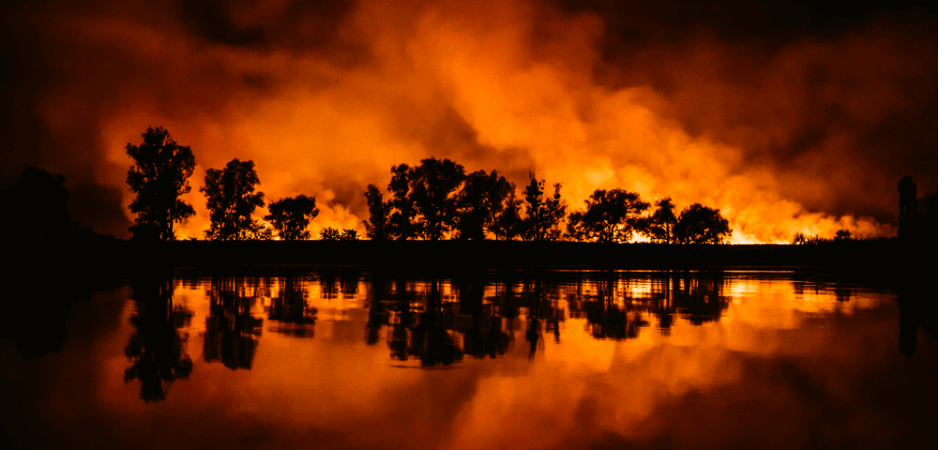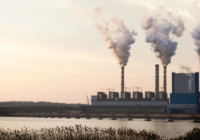Is the current heat wave caused by climate change?
In early 2017, Fair Observer published my article just ahead of President Donald Trump’s inauguration discussing the possible course the new administration may take in response to climate change. Since then, the Trump administration’s views on global warming haven’t changed. If anything, actions and words expressed by the US government have become even more entrenched in the determination to deny the science and defy international efforts to act and mitigate the global impacts of climate change.
While leaving more to be desired, the 2015 Paris Agreement at least provided a new and better-defined direction for renewables and decarbonization of global economies. But the Trump administration has walked away from the agreement, while the rest of the world tries desperately to make something of it and move toward some level of coordinated action. The agreement is limited in its force, and only time will tell whether it will be enough to avert the global warming that it has set its target on. But for some, including myself, it’s still an agreement and, hopefully, a platform for improvement and recalibration.
In the meantime, what about global warming and climate change? How is it tracking? On a daily basis, I am asked: Is the globe getting warmer? Are we at a point of no return, and are the dire predictions inevitable now? Is the current heat wave caused by climate change? Are we going to experience more frequent severe weather events?
No Simple Answers
Unfortunately, while these are simple and valid questions, there are no simple answers. But what we can reasonably do is to make observations and presents facts. Having said that, I also recognize that observations and even facts are prone to cherry-picking and confirmation bias, as I explain in my book, A Climate for Denial. But here goes.
First, let’s look at some statistics. According to available data for the G20 countries and published by Enerdata in its May 2018 Global Energy Trends, 2017 continued the previous 2 to 3-year trend in global economic growth (+3.7%), stable energy demand (+2.1%) and consequently stable energy-related growth in CO2 emissions (+2%); economic growth in the European Union and the US was higher, at around +2.5%; CO2 emissions in Organisation for Economic Co-operation Development (OECD) countries fell slightly; and energy efficiency improved marginally, while consumption of energy increased by 3% in non-OECD countries, particularly in China and India.
China continued decarbonization of its economy, shifting toward a less energy intensive economy and a decrease in the share of coal in the energy mix. But CO2 emissions increased by 2.6% in non-OECD countries and by 1.3% in OECD countries (they are supposed to be decreasing). Global energy intensity (energy consumption/GDP) is decreased at a slower rate, but heading in the right direction. Economic growth in non-OECD countries will require new breakthroughs to achieve the objectives of the Paris Agreement (2oC target).
According to the Global Trends in Renewable Energy Investment 2018 report, published by Bloomberg New Energy Finance and UN Environment Programme, a record 157 GW of renewable power (excluding large hydro) were commissioned in 2017, up from 143 GW in 2016 and far outstripping the 70 GW of net fossil fuel generating capacity added in the same period. The proportion of world electricity generated by wind, solar, biomass and waste to energy, geothermal, marine and small hydro rose from 11% in 2016 to 12.1% in 2017. This corresponds to around 1.8 Gt of CO2 emissions avoided.
Global investment in renewable energy edged up 2% in 2017 to $279.8 billion, taking cumulative investment since 2010 to $2.2 trillion or to $2.9 trillion since 2004. The leading country by far for renewable energy investment in 2017 was China, which accounted for 45% of the global total. And renewable energy investment in the US was $40.5 billion, down 6%. This was relatively resilient in the face of policy uncertainty.
The simplistic conclusion from these figures is that the world knows what must be done and is slowly moving in the right direction by investing in renewables and improving energy intensity while maintaining economic growth. The most encouraging trend in recent years has been the decline in the capital costs of renewable energy installation, particularly solar power. But global decarbonization is moving far too slowly and certainly slower than it must to avoid and ensure that we stay well below the predicted 2oC increase in global temperature rise.
And in the meantime, global temperatures keep rising, with many regions already experiencing noticeable changes in the climate, including the current heat waves in the Northern Hemisphere, record-high temperatures in Australia and increased droughts and floods around the world. Are these events entirely attributable to global warming? No, of course not. But there appear to be trends that are worrying the scientific community, and these trends are exceeding the climate change impacts as predicted by very sophisticated models.
What’s Missing?
So, what’s missing? What do we need to push global action further and faster? Again, these are simple questions, but the answers are extremely complex. So, let’s break it down to these four aspects that need to be addressed: global agreements and initiatives, regional initiatives, national commitments and individual actions. I discuss these in more detail in my book, but here is a brief summary.
First, global agreements can only at best provide a map of where we are and where we need to be, but unless they are binding and enforceable, that’s all they are — a map. But in their defense, that’s all they can be, mainly due to the huge discrepancy and disparity in the economic, technical and social landscapes countries. The gap is so large that the required policies and actions by each country are as diverse as the task is enormous. Basically, the developed industrialized world has to make huge steps forward to decarbonize quickly, while the developing world has to achieve its economic development using renewables and energy efficient technologies — there is no other way. The developed countries can significantly increase the assistance provided to developing countries by offering finance and technology.
Second, regional initiatives will be useful to optimize opportunities that are available in regions, states and areas with synergistic means of decarbonizing through sharing resources, aligning policies and providing assistance.
Third, national commitments are required by the Paris Agreement, but they must be enforceable and ambitious.
Finally, as individuals we can do a lot by encouraging our respective governments at all levels to commit and implement policies and regulations that achieve the required decarbonization outcomes. Such measures include subsidies and other punitive measures, including a price on carbon that encourages development of low carbon energy supply and technologies. Individually, we can also make purchasing decisions and also invest in energy efficient and low carbon living, including installation of solar power.
So, are we there yet? No, not even close. Unfortunately, the slower we move, the longer the distance will become.
The views expressed in this article are the author’s own and do not necessarily reflect Fair Observer’s editorial policy.
Photo Credit: vladseagull / Shutterstock.com
Support Fair Observer
We rely on your support for our independence, diversity and quality.
For more than 10 years, Fair Observer has been free, fair and independent. No billionaire owns us, no advertisers control us. We are a reader-supported nonprofit. Unlike many other publications, we keep our content free for readers regardless of where they live or whether they can afford to pay. We have no paywalls and no ads.
In the post-truth era of fake news, echo chambers and filter bubbles, we publish a plurality of perspectives from around the world. Anyone can publish with us, but everyone goes through a rigorous editorial process. So, you get fact-checked, well-reasoned content instead of noise.
We publish 2,500+ voices from 90+ countries. We also conduct education and training programs
on subjects ranging from digital media and journalism to writing and critical thinking. This
doesn’t come cheap. Servers, editors, trainers and web developers cost
money.
Please consider supporting us on a regular basis as a recurring donor or a
sustaining member.
Will you support FO’s journalism?
We rely on your support for our independence, diversity and quality.





